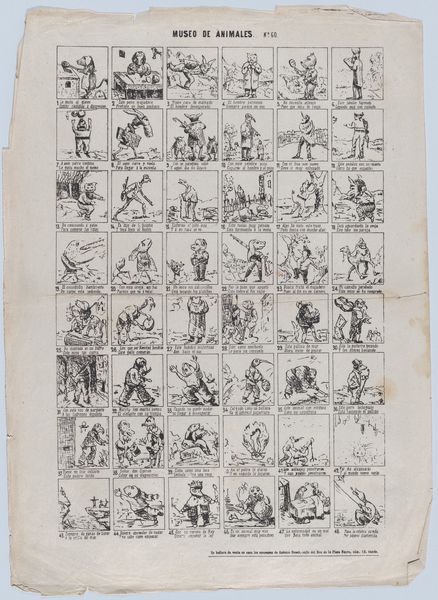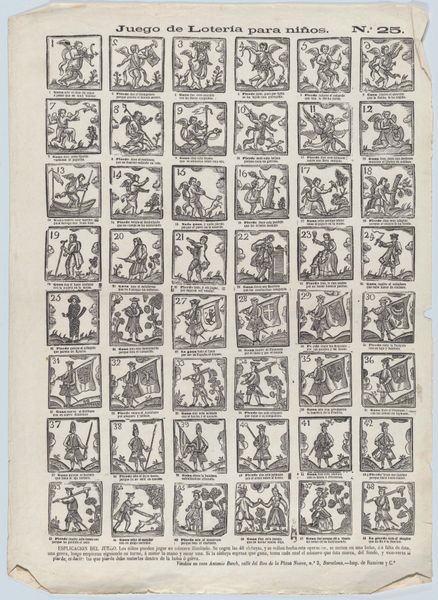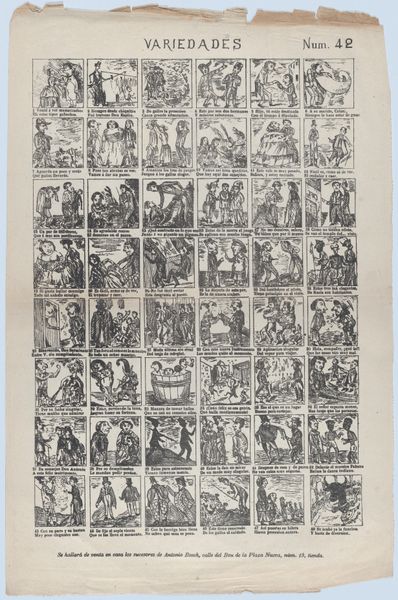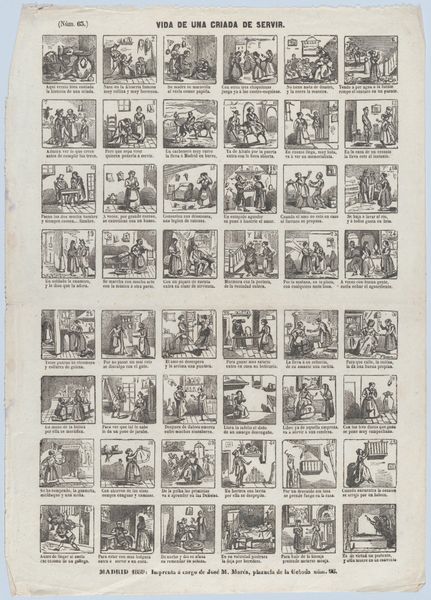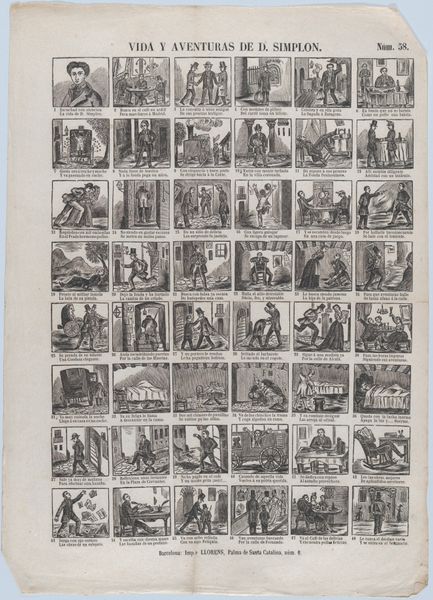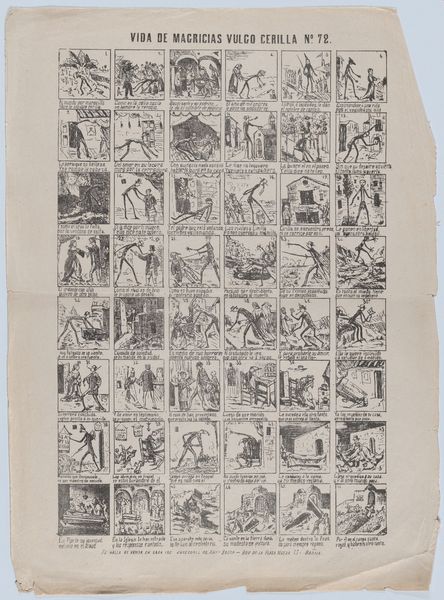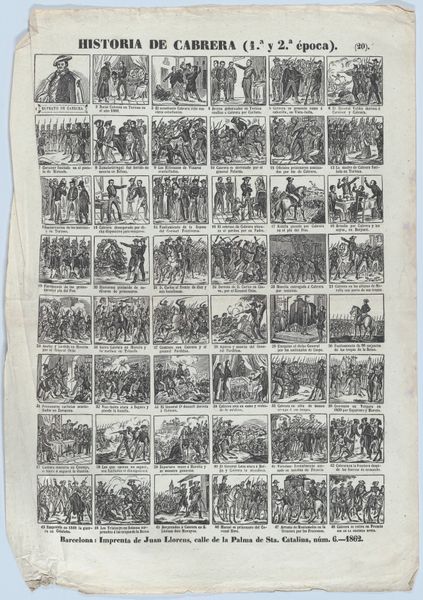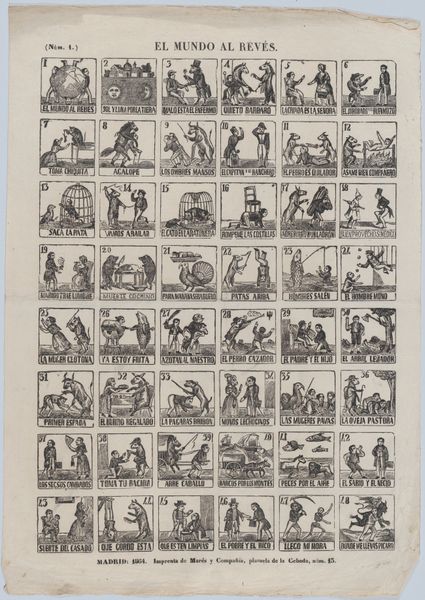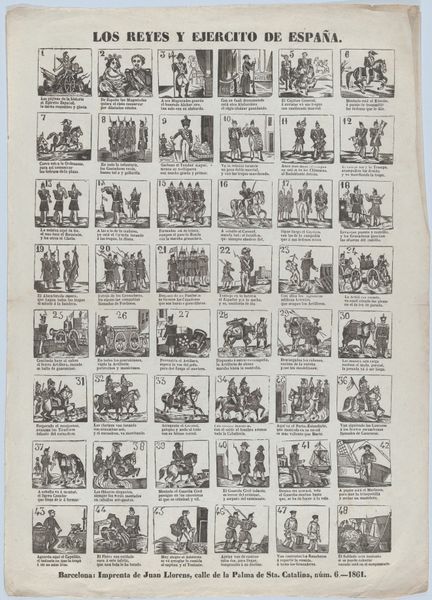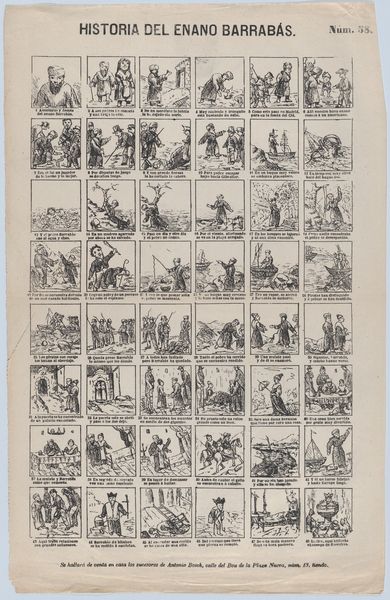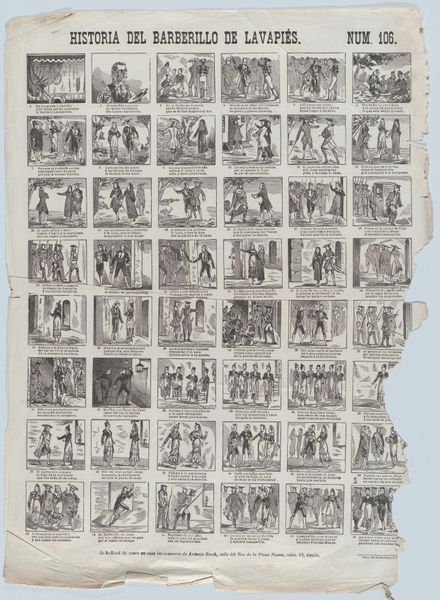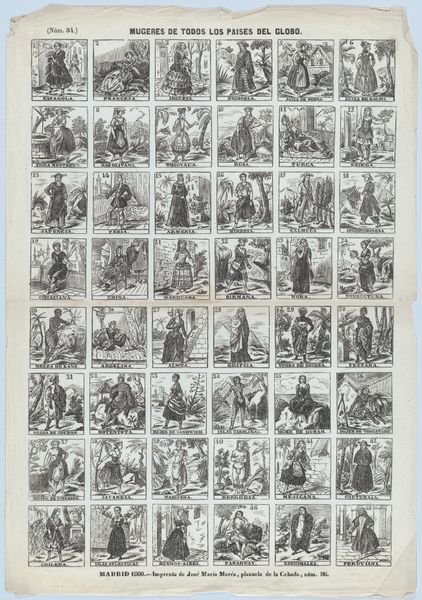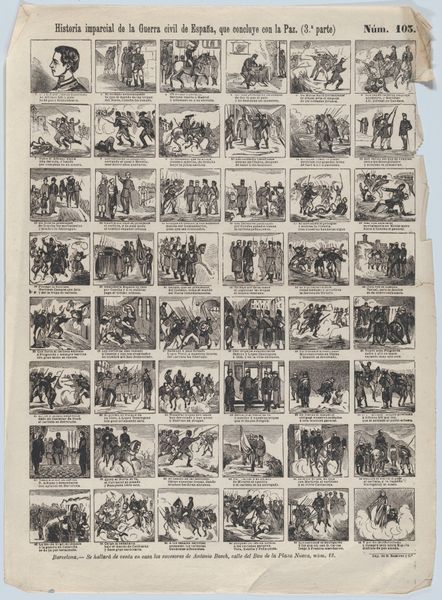
Dimensions: Sheet: 17 5/16 × 12 5/8 in. (44 × 32 cm)
Copyright: Public Domain
Curator: Here we have "A Childrens Game," created between 1855 and 1865 by Antonio Bosch. This piece is a print consisting of etching and engraving. Editor: My first impression is one of fragmented joy, a compilation of snapshots. Each miniature scene feels both self-contained and part of a larger narrative about childhood innocence. The monochromatic rendering seems stark. Curator: Indeed. Bosch compiles vignettes illustrating different childhood games prevalent at the time, offering us a visual record of societal values, recreation, and the evolving roles children played. Think of them as mnemonic devices. Editor: So, a kind of historical catalogue rendered in print? I'm struck by the compositions within each small frame—the use of line is really fascinating, it reminds of early photogravure processes and wood engraving techniques. There’s also an emphasis on gesture, each figure is highly posed. Curator: Consider how certain games reflect skill-building, social dynamics, even early forms of role-playing that subconsciously prepare children for adult responsibilities. For instance, those playing soldier or conducting mock trials, or girls tending to miniature home and domestic chores. They echo, on a small scale, societal expectations. Editor: It feels quite didactic, presenting ideals of childhood rather than raw, unfiltered experiences. I wonder what a child contemporary to Bosch would have made of these prescribed forms of play. Each game seems structured, almost formalised, very much like social rituals rendered as quaint black lines. Curator: The medium, a print intended for mass distribution, would have made these images very accessible. Consider its influence on circulating and reinforcing these very concepts of play and social expectations. These scenes probably sparked discussions in households and amongst kids and influenced behavior. Editor: Exactly. And through that, this rather academic rendering of childhood gains a tangible emotional weight, its visual construction of order quietly instructing how these games ought to have been perceived. It makes us wonder what's consciously chosen and not, of the collective ideals this artist captures. Curator: Ultimately, reflecting on Bosch's piece, it's interesting how children’s games evolve. How those shift reflects underlying transformations within cultures. Editor: And the artist, here, is really holding a mirror to values which gives this artwork an additional significance beyond its technique.
Comments
No comments
Be the first to comment and join the conversation on the ultimate creative platform.

